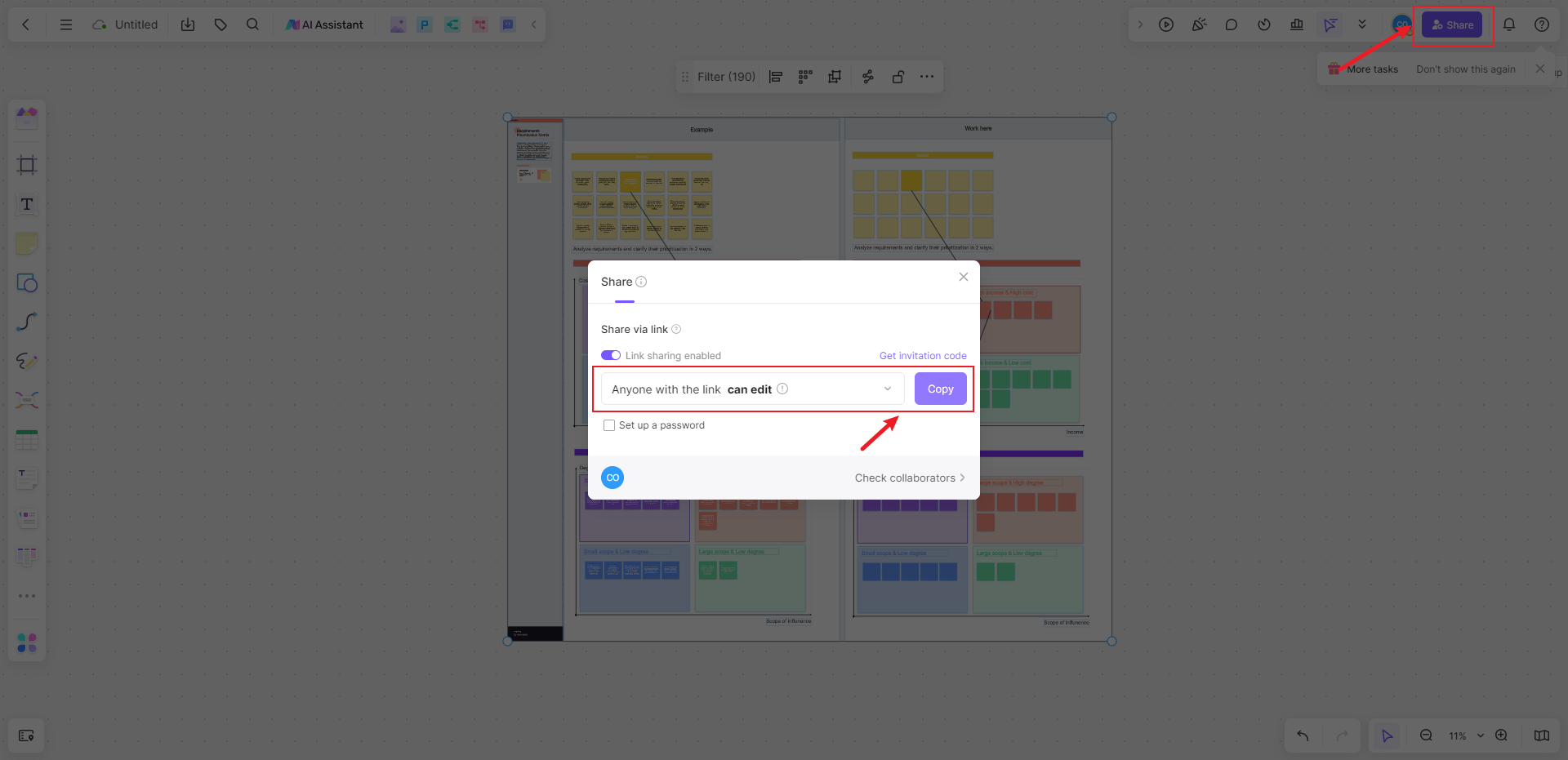Decoding success in any project often hinges on one critical aspect - prioritizing requirements. This is where a Requirements Prioritization Matrix comes into play. This matrix allows you to categorize, rank, and prioritize requirements based on their importance and impact, ensuring that your resources are focused on what truly matters. But how does one create and utilize this matrix effectively? Let's embark on this enlightening journey together, exploring the nuances of the Requirements Prioritization Matrix and its power to redefine your project outcomes.
What is the Requirements Prioritization Matrix?
The Requirements Prioritization Matrix is a tool used in project management to prioritize and evaluate different requirements based on their importance and impact on the project's goals. It helps project managers and stakeholders make informed decisions about which requirements should be given higher priority and resources.
The matrix typically consists of two axes: one representing the importance or priority of the requirement and the other representing the impact or benefit of implementing the requirement. Each requirement is then plotted on the matrix based on these two criteria.
The importance or priority of a requirement can be determined by factors such as business value, customer needs, regulatory compliance, or strategic alignment. The impact or benefit of implementing a requirement can be assessed based on factors such as cost savings, increased efficiency, improved customer satisfaction, or competitive advantage.
It is important to regularly review and update the Requirements Prioritization Matrix as project priorities and goals may change over time. This ensures that the project remains aligned with the organization's objectives and delivers maximum value to stakeholders.
The Requirements Prioritization Matrix is a valuable tool for project managers to make informed decisions about resource allocation and prioritize requirements based on their importance and impact.
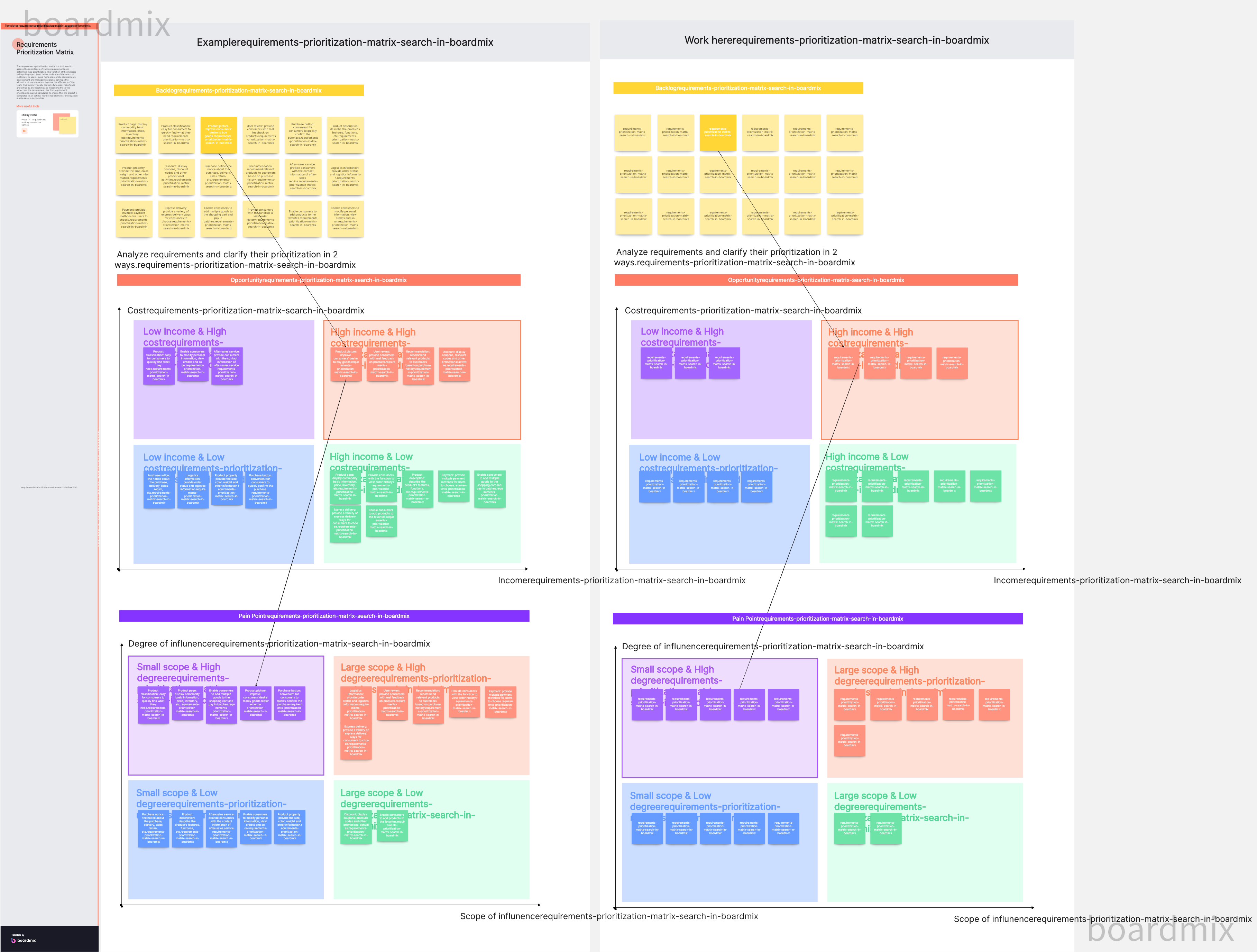
Why is the Requirements Prioritization Matrix Important?
In project management, the requirement priority matrix is a very important tool. It provides a systematic way to determine the priority of project requirements.
1. Clarify Key Requirements
All projects have limited resources, including time, manpower, and funds. By using the requirement priority matrix, it can clearly identify which requirements are most critical to project success and which are secondary.
2. Support Decision Making
The requirement priority matrix provides an objective method to compare and contrast different requirements. It can help the project team make informed decisions, such as which requirements should be prioritized when faced with resource constraints.
3. Promote Communication and Consensus
By clearly and transparently displaying the priorities of requirements, all stakeholders can see how these decisions are made. This not only promotes communication within the project team but also helps manage external stakeholder expectations.
4. Improve Efficiency
Ensuring that the team focuses on the most important work rather than those that may not be so important or urgent can improve project efficiency and productivity.
5. Reduce Risk
By ensuring that the most important requirements are met, it can reduce the risk of project failure or delay.
The Requirements Prioritization Matrix is important because it enables project teams to prioritize their efforts, optimize resource allocation, and ensure that the most critical requirements are met, ultimately leading to project success. The requirement priority matrix can help project teams clarify key requirements, support decision-making, promote communication, improve efficiency, and reduce risk.
What is the Requirements Prioritization Matrix Process?
The Requirements Prioritization Matrix process involves several steps to prioritize and evaluate different requirements based on their importance and impact. Here is a general overview of the process.
- Identify and gather requirements: The first step is to identify and gather all the requirements for the project. This can be done through interviews, surveys, workshops, or other methods of gathering stakeholder input.
- Define criteria for prioritization: Next, project teams need to define the criteria that will be used to prioritize the requirements. These criteria can include factors such as business value, customer needs, regulatory compliance, or strategic alignment.
- Assign weights to criteria: Once the criteria are defined, project teams need to assign weights to each criterion based on their relative importance. This allows for a more objective assessment of the requirements.
- Assess requirements: The next step is to assess each requirement based on the defined criteria. This can be done through discussions, evaluations, or scoring methods. Each requirement is evaluated and given a score or ranking based on its importance and impact.
- Plot requirements on the matrix: After assessing the requirements, project teams plot them on the Requirements Prioritization Matrix. The matrix typically consists of two axes: one representing the importance or priority of the requirement and the other representing the impact or benefit of implementing the requirement. Each requirement is plotted on the matrix based on these two criteria.
- Analyze and prioritize requirements: Once all requirements are plotted on the matrix, project teams analyze the results and prioritize the requirements. This can be done by identifying clusters or patterns of requirements that fall into specific quadrants of the matrix, such as high importance and high impact or low importance and low impact. The requirements in the high-importance and high-impact quadrant are given higher priority.
- Review and update: It is important to regularly review and update the Requirements Prioritization Matrix as project priorities and goals may change over time. This ensures that the project remains aligned with the organization's objectives and delivers maximum value to stakeholders.
By following this process, project teams can prioritize their efforts and resources on the most critical requirements, leading to a more successful project outcome.

How to Utilize Requirements Prioritization Matrix Effectively
To effectively utilize a Requirements Prioritization Matrix, consider the following tips.
- Involve key stakeholders: Ensure that all relevant stakeholders are involved in the prioritization process. This includes representatives from different departments or teams who can provide valuable insights and perspectives.
- Clearly define criteria: Clearly define the criteria that will be used to prioritize the requirements. Make sure that the criteria align with the project's goals and objectives. This will help in making objective decisions during the prioritization process.
- Assign weights thoughtfully: When assigning weights to the criteria, think carefully about their relative importance. Consider factors such as business value, customer needs, regulatory compliance, and strategic alignment. Assign higher weights to criteria that have a greater impact on the project's success.
- Evaluate requirements objectively: Evaluate each requirement based on the defined criteria and their importance to the project. Use a scoring system or other evaluation methods to ensure consistency and objectivity. This will help in comparing and ranking the requirements effectively.
- Analyze the matrix results: Once the requirements are plotted on the matrix, analyze the results to identify patterns or clusters. Look for requirements that fall into specific quadrants of the matrix, such as high importance and high impact. These requirements should be given higher priority.
- Consider trade-offs: During the prioritization process, it is important to consider trade-offs between different requirements. Some requirements may have a higher priority but a lower impact, while others may have a lower priority but a higher impact. Consider the overall project objectives and make decisions accordingly.
- Regularly review and update: The prioritization process should not be a one-time activity. Regularly review and update the Requirements Prioritization Matrix as project priorities and goals may change over time. This will ensure that the matrix remains relevant and aligned with the organization's objectives.
By following these tips, you can effectively utilize a Requirements Prioritization Matrix to make informed decisions about resource allocation and prioritize requirements based on their importance and impact.
Boardmix: Requirements Prioritization Matrix Template Maker
Boardmix is an AI-based requirements prioritization matrix template maker. It uses the latest AI technology to provide users with customized and adaptable requirements prioritization matrix templates to help project teams effectively manage and prioritize requirements.
1. How to use Boardmix
Creating a requirements prioritization matrix is easy with Boardmix. Here is the process:
(1) Login or register with Boardmix.

(2) Search and select a requirements prioritization matrix template.
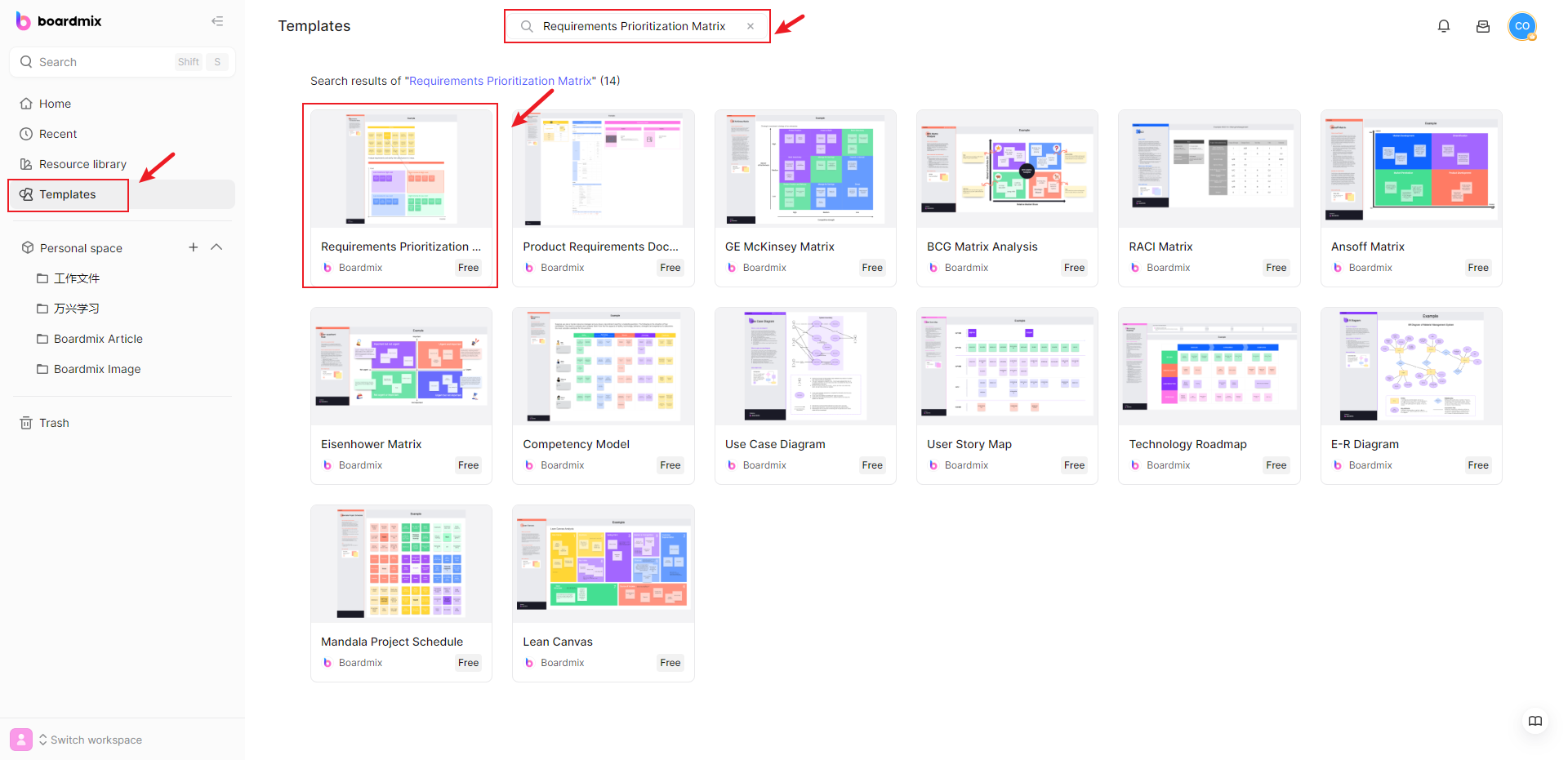
(3) Customize your requirements prioritization matrix.
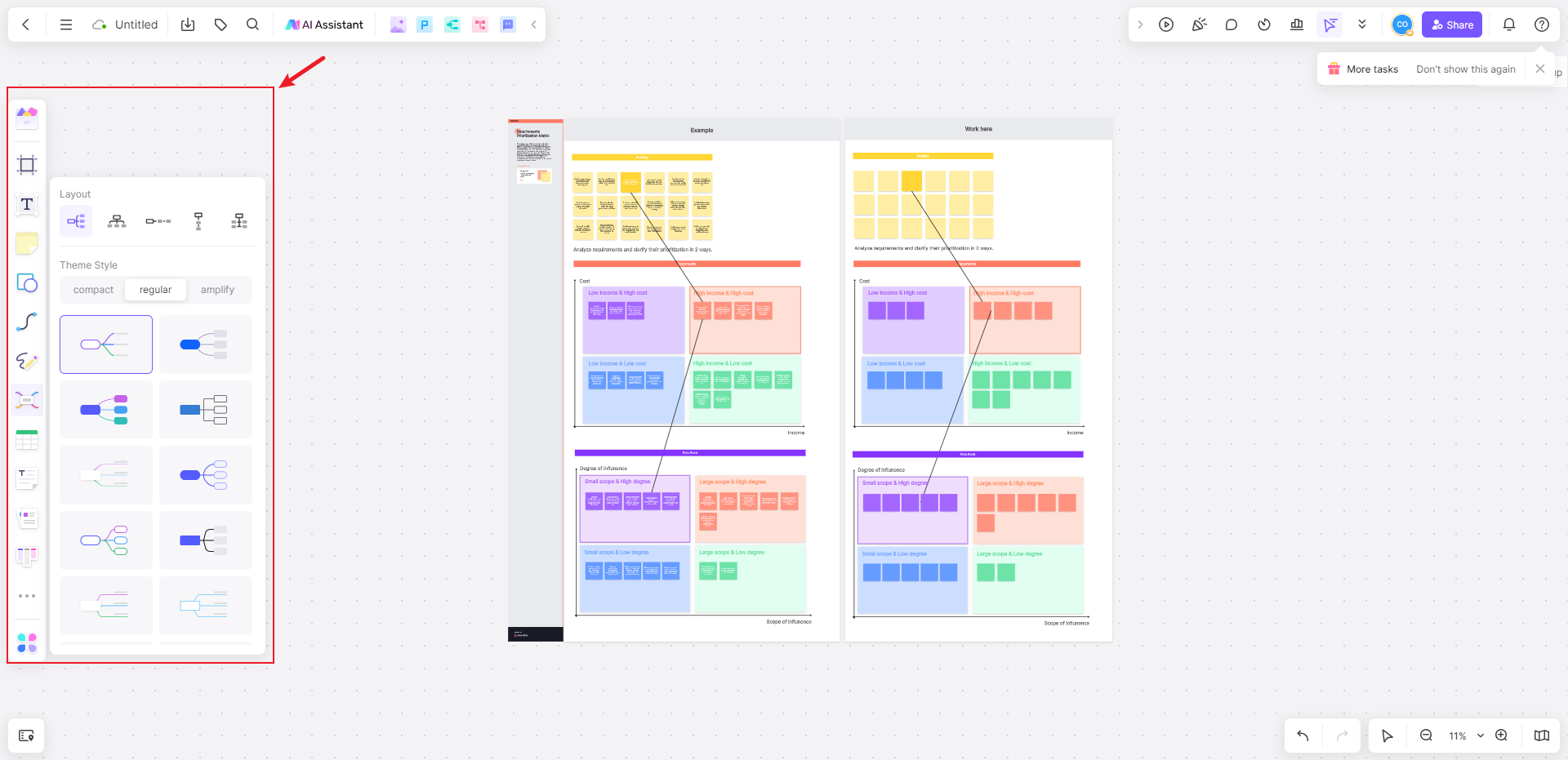
(4) Save and share your requirements prioritization matrix.
2. Features of Boardmix
The main features of Boardmix are its power and flexibility. Not only can customized requirements prioritization matrix templates be generated based on the user's specific needs and preferences, but they can also be adapted to a variety of projects of different types and sizes.
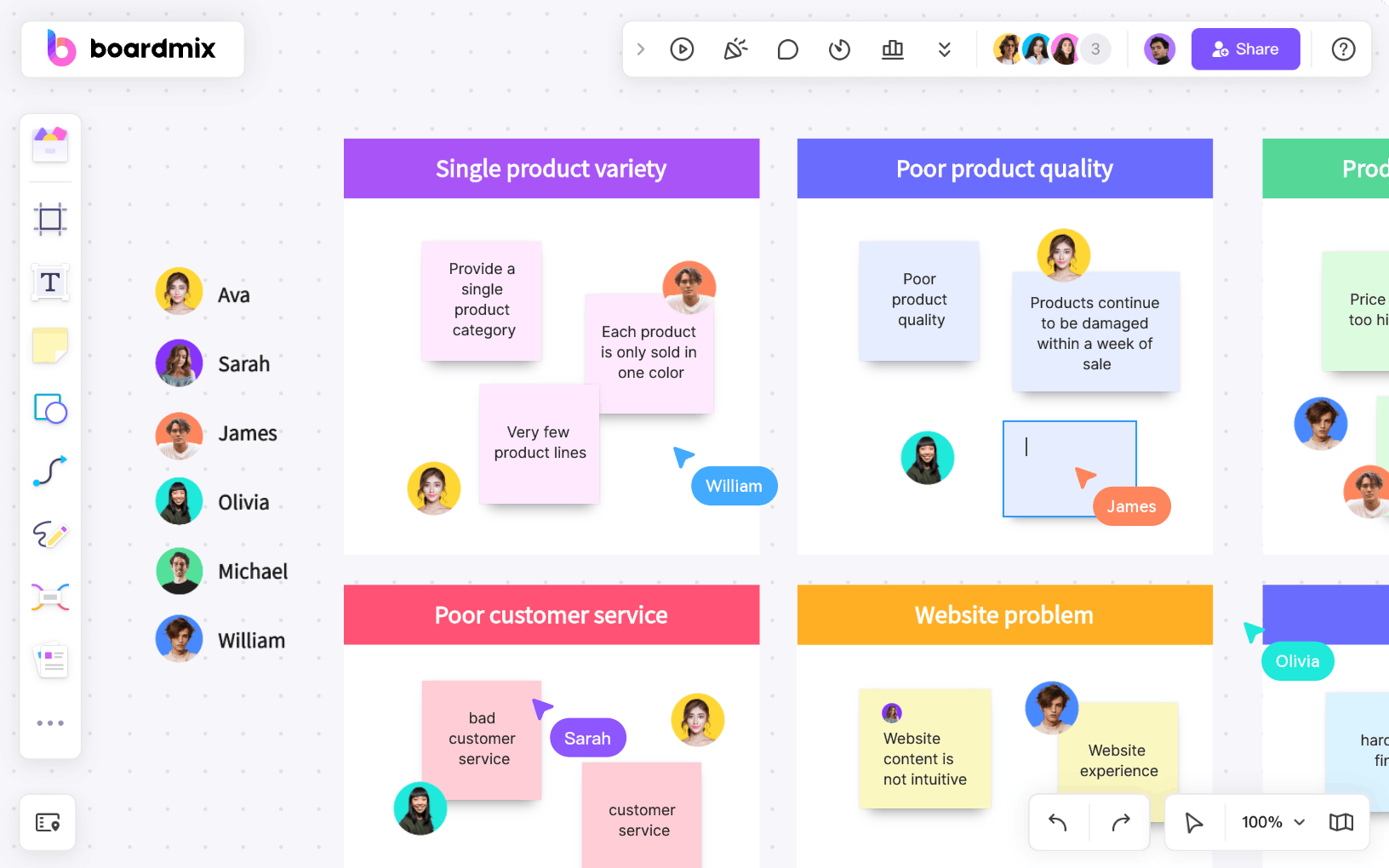
Boardmix is a revolutionary tool that brings unprecedented convenience and efficiency to project management by introducing AI technology. No matter what your challenge is, Boardmix can provide effective solutions to help you achieve project success.






